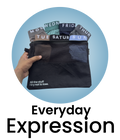Imagine a world where everyday comfort isn't a compromise. The innerwear market is evolving, demanding more than just basic coverage. Consumers are actively seeking garments that feel good and move with them. This exploration dives into the realm of cotton innerwear, focusing on the synergy of soft-touch fabrics and unrestricted movement. We'll examine how advancements in textile engineering, specifically in cotton processing and knit structures, are enabling manufacturers to create innerwear that delivers both superior comfort and a barely-there feel. Explore the impact of these innovations on enhancing daily experiences.

The Allure of Cotton: A Fiber's Journey to Your Skin
Cotton, a natural fiber harvested from the cotton plant, has been a staple in textile production for millennia. Its popularity stems from its inherent properties: softness, breathability. Absorbency. These characteristics make it an ideal choice for garments that come into direct contact with the skin, most notably innerwear. But not all cotton is created equal. The type of cotton, the way it's processed. The weave all contribute to the final feel and performance of the fabric. Different types of cotton include:
- Upland Cotton: The most common type, known for its affordability and versatility.
- Pima Cotton: A higher-quality cotton with longer fibers, resulting in a softer and more durable fabric. Often marketed under trademarks like Supima.
- Egyptian Cotton: Renowned for its exceptional softness and strength, Egyptian cotton is considered a luxury fiber.
- Organic Cotton: Grown without the use of synthetic pesticides or fertilizers, organic cotton is a more sustainable and environmentally friendly choice.
The processing of cotton also significantly impacts its characteristics. Combed cotton, for example, undergoes an additional process to remove short fibers and impurities, resulting in a smoother and more refined yarn. Mercerization, a treatment that strengthens the fibers and adds luster, is another common process.
Why Cotton Innerwear Matters: Comfort and Health
Choosing the right innerwear is about more than just aesthetics; it's about comfort and hygiene. Cotton's natural breathability allows air to circulate freely, preventing the buildup of moisture and reducing the risk of bacterial growth. This is particularly vital in intimate areas, where moisture can lead to discomfort and infections. Synthetic fabrics, on the other hand, tend to trap moisture, creating a less-than-ideal environment. Moreover, cotton is hypoallergenic, meaning it's less likely to cause allergic reactions or skin irritation. This makes it a suitable choice for people with sensitive skin or allergies. The soft texture of cotton also minimizes chafing and discomfort, ensuring a pleasant wearing experience throughout the day. I remember a time when I was traveling in a humid climate and wore synthetic innerwear. The discomfort was unbearable! Switching to cotton innerwear made a world of difference, keeping me cool and dry even in the sweltering heat. This personal experience reinforced my belief in the importance of choosing the right fabric for garments that are worn close to the skin.
Freedom of Movement: The Role of Fabric and Design
While the fabric itself plays a crucial role in comfort, the design and construction of the innerwear are equally vital for freedom of movement. A well-designed garment should allow for a full range of motion without feeling restrictive or binding. This is achieved through a combination of factors, including:
- Fabric Stretch: Cotton fabrics with a small percentage of elastane (e. G. , 5-10%) offer a degree of stretch that enhances freedom of movement.
- Seam Placement: Strategically placed seams can minimize chafing and prevent the garment from bunching up or riding up. Flatlock seams, which lie flat against the skin, are particularly effective in reducing irritation.
- Cut and Style: Different styles of innerwear offer varying degrees of coverage and support. Boxer briefs, for example, provide more coverage and support than briefs, while thongs offer minimal coverage. The choice of style depends on personal preference and the intended activity.
- Elastic Waistbands: A comfortable and secure waistband is essential for keeping the garment in place without digging into the skin. Wide, soft waistbands are generally preferred over narrow, elastic bands.
Cotton Blends: Balancing Comfort and Performance
While pure cotton offers excellent comfort and breathability, it can sometimes lack the durability and stretch of synthetic fabrics. This is where cotton blends come in. By combining cotton with other fibers, manufacturers can create fabrics that offer a balance of comfort, performance. Durability. Common cotton blends include:
- Cotton/Polyester: This blend combines the comfort of cotton with the wrinkle resistance and durability of polyester.
- Cotton/Spandex (Elastane): This blend adds stretch and recovery to cotton, making it ideal for garments that require a close fit and freedom of movement.
- Cotton/Modal: Modal is a semi-synthetic fiber derived from beech trees. It's known for its softness, drape. Resistance to shrinkage.
Choosing the right cotton blend depends on the specific needs of the garment. For example, a cotton/polyester blend might be suitable for everyday wear, while a cotton/spandex blend would be a better choice for athletic innerwear.
Beyond Underwear: Cotton in Loungewear
The benefits of cotton extend beyond just Underwear. Its soft touch and breathability make it a popular choice for Loungewear as well. Think about relaxing at home in a pair of cotton pajamas or a comfortable cotton robe. The same principles apply: cotton allows your skin to breathe, keeping you comfortable and preventing overheating. The versatility of cotton also allows for a wide range of styles and designs in Loungewear. From lightweight cotton knits to cozy cotton flannels, there's a cotton Loungewear option for every season and preference.
Caring for Your Cotton Innerwear and Loungewear
To ensure that your cotton innerwear and Loungewear remain soft, comfortable. Durable, it's crucial to follow proper care instructions. Here are some general guidelines:
- Wash in cool or warm water: Hot water can cause cotton to shrink and fade.
- Use a mild detergent: Harsh detergents can damage the fibers and irritate the skin.
- Avoid bleach: Bleach can weaken the fibers and cause discoloration.
- Tumble dry on low heat or hang to dry: High heat can cause shrinkage and damage the fibers.
- Iron on a low setting if necessary: Cotton can wrinkle easily. Ironing can help to restore its smooth appearance.
By following these simple care tips, you can extend the life of your cotton innerwear and Loungewear and enjoy its comfort and benefits for years to come.
Conclusion
The road ahead for cotton innerwear is paved with innovation and a deeper understanding of comfort. We've explored the undeniable benefits of soft-touch fabric and the freedom of movement it provides, elements that are no longer considered luxuries. Essential components of everyday wear. Looking forward, expect to see even more integration of sustainable practices in cotton production. Advancements in fabric technology that further enhance breathability and durability. The next step is simple: prioritize your comfort. Don't settle for restrictive innerwear that hinders your day. Choose cotton, experience the difference. Embrace the freedom it provides. By actively seeking out brands committed to quality and sustainable practices, you're not only investing in your well-being but also contributing to a more responsible future for the fashion industry. Go ahead, feel the difference.
More Articles
Women's Boy Shorts for Women Under Skirts – Smooth Fit & All-Day Comfort
Men's Low Rise Brief for Men – Modern Style & Comfortable Support
8 Creative Ways to Use Men's Cotton Trunks
FAQs
Okay, so what exactly is 'Soft Touch Fabric' when we're talking cotton innerwear?
Good question! 'Soft Touch Fabric' means the cotton has been treated in a way that makes it extra smooth and gentle against your skin. Think of it like your favorite worn-in t-shirt. Even softer. They often use special washing or brushing techniques to achieve that luxurious feel.
Why is 'Freedom of Movement' even a selling point for underwear? Seems kinda obvious?
Ha! You'd think so, right? But trust me, not all underwear is created equal. 'Freedom of Movement' means the design and fabric allow you to move naturally without feeling restricted or like you're constantly adjusting. Stretchy fabrics, thoughtful cuts. Comfortable waistbands all play a part in achieving that freedom.
Will this 'soft touch' thing last after washing? I've been burned before...
That's a totally valid concern! While some fading is inevitable over time, high-quality 'Soft Touch' cotton innerwear is designed to hold its softness through multiple washes. Always follow the care instructions on the label – usually a gentle cycle and low heat drying will help preserve that lovely feel.
Is this cotton innerwear breathable? I sweat easily... (sorry, TMI!)
No worries, totally normal! Cotton is naturally breathable, which is a huge plus for innerwear. 'Soft Touch' cotton is usually still breathable. It's worth double-checking the fabric composition. Look for 100% cotton or a high percentage if breathability is a top priority.
Does 'freedom of movement' mean it's going to be baggy and unflattering?
Absolutely not! 'Freedom of movement' doesn't equal 'shapeless sack'. It's about a comfortable, flexible fit that moves with you, not against you. The design should still be flattering and provide support where you need it.
What's the difference between regular cotton and this 'Soft Touch' cotton? Is it worth the extra money?
Think of regular cotton as your basic, reliable friend. 'Soft Touch' cotton as that friend who always has the best skincare routine. Both are good. 'Soft Touch' goes the extra mile for comfort. Whether it's worth the extra money depends on how much you value that extra softness and luxurious feel against your skin!
Okay, I'm sold. What kind of activities is this innerwear best for?
Honestly, it's pretty versatile! The combination of soft fabric and freedom of movement makes it great for everyday wear, light workouts like yoga or walking, or even just lounging around the house. Avoid it for super intense, sweaty workouts where you might want something more moisture-wicking, like a synthetic fabric.






